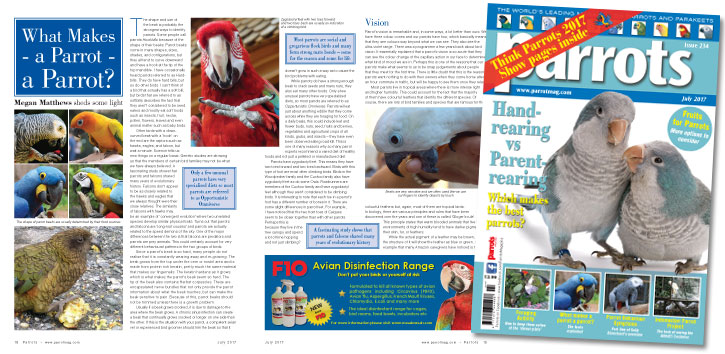
Megan Matthews sheds some light
The shape and use of the beak is probably the strongest ways to identify parrots. Some people call parrots Hookbills because of the shape of their beaks. Parrot beaks come in many shapes, sizes, shades, and configurations, but they all tend to curve downward and have a hook at the tip of the top mandible. I have occasionally heard parrots referred to as Hard-bills. They do have hard bills, but so do other birds. I can’t think of a bird that actually has a soft bill, but birds that are referred to as softbills describes the fact that they aren’t considered to be seed eaters and mostly eat soft foods such as insects, fruit, nectar, pollen, flowers, leaves and even animal matter such as baby birds.
Other birds with a down-curved beak with a ‘hook’ on the end are the raptors such as hawks, eagles, and falcon, but wait a minute. Science tells us new things on a regular basis. Genetic studies are showing us that the members of certain bird families may not be what we have always believed. A fascinating study shows that parrots and falcons shared many years of evolutionary history. Falcons don’t appear to be as closely related to the hawks and eagles that we always thought were their close relatives. The similarity of falcons with hawks may be an example of ‘convergent evolution’ where two unrelated species develop similar physical traits. Turns out that parrots and falcons are ‘long-lost cousins’ and parrots are actually related to the speed demons of the sky. One of the major differences between the two is that falcons are predators and parrots are prey animals. This could certainly account for very different behavioural patterns in the two groups of birds.
Buy Now!








Parrot Chat
Buyers Guides
Breeding articles